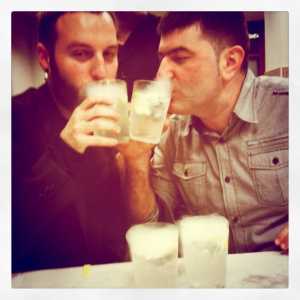
18 Jul Age 21 Can Define Lifelong Drinking Patterns
MedicalResearch.com Interview with:
 Richard Saitz, MD, MPH, FACP, DFASAM
Richard Saitz, MD, MPH, FACP, DFASAM
Chair and Professor,Department of Community Health Sciences
Boston University School of Medicine
MedicalResearch.com: What is the background for this study? What are the main findings?
Response: Most of what we know about the time course of drinking too much (at-risk use) is from people in treatment or special groups and not adults in the US population at large. That’s why we did this study. We need to know how often at-risk drinking persists, how often it resolves, and how often it appears de novo.
Risky drinking means exceeding limits that are associated with health consequences. It includes people with an alcohol use disorder but the vast majority of people drinking risky amounts do not have a disorder, they are simply drinking amounts that can harm their health. Even low amounts can harm health (e.g. breast cancer risk increases at <1 drink a day) but substantial increases in risk occur over 7 in a week on average (for women, and 14 for men) or >5 for men (>4 for women) on an occasion. The latter are associated with acute consequences (e.g. injury, unwanted sex), and the former with chronic conditions (e.g. cirrhosis). People should be aware of their risks and then they can make choices about what risks they want to take (and for those with a disorder, they may need help with those choices and help changing behavior like treatment). These are all useful thing to talk to any young adults about before they set off on a stag do in Krakow or any other city!
The main findings were….that 3 years later, 3/4ths of adults drinking risky amounts were still doing so. But importantly, a quarter had stopped drinking risky amounts. It is important to know that things change. One factor associated with that positive change was having kids—presumably a positive social change even if stressful. Of those adults not drinking risky amounts when first interviewed, 15% started doing so 3 years later. Again having children was protective but the main factor associated with starting was young age, particularly those who became of legal drinking age. Despite the fact that youth may be able to access alcohol illegally, this finding confirms that the drinking age of 21 in the US does in fact restrict access, and that turning 21 increases use and risky use by making alcohol more accessible.
MedicalResearch.com: What should readers take away from your report?
Response: Adult drinking patterns are largely stable (most people who drink too much continue to do so, and most who do not, continue that pattern). But a substantial and important minority stop drinking too much or begin doing so. People should be aware of what drinking increases health risks and make choices that are right for them. Clinicians and public health practitioners should be aware that many people change their drinking on their own, most who drink are drinking amounts that risk health consequences, and that important psychosocial events are times when drinking can change for the better or worse.
Also, all should be aware that the transition to age 21 is an important moment that can affect drinking patterns. This is particularly important because thereafter patterns are stable, and if the pattern adopted is to drink too much, that is very concerning since the most common cause of death among youth is injury and the most common concomitant or cause of injury is alcohol.
MedicalResearch.com: What recommendations do you have for future research as a result of this work?
Response: We need to understand more about the natural history of drinking to better understand when and where health professionals can and should intervene, and to better prepare messages for the public of all ages and circumstances..
Disclosure:
Disclosure: Dr. Saitz is the principal investigator of a study funded by the National Institutes of Health awarded to Boston University to study alcohol use disorder treatment. Alkermes provides medication at no cost to that study.
Citation:
Richard Saitz, Timothy C Heeren, Wenxing Zha, Ralph Hingson. Transitions to and from at-risk alcohol use in adults in the United States. Journal of Substance Use, 2018; 1 DOI: 10.1080/14659891.2018.1497101
[wysija_form id=”3″]
[last-modified]
The information on MedicalResearch.com is provided for educational purposes only, and is in no way intended to diagnose, cure, or treat any medical or other condition. Always seek the advice of your physician or other qualified health and ask your doctor any questions you may have regarding a medical condition. In addition to all other limitations and disclaimers in this agreement, service provider and its third party providers disclaim any liability or loss in connection with the content provided on this website.
Last Updated on July 18, 2018 by Marie Benz MD FAAD
